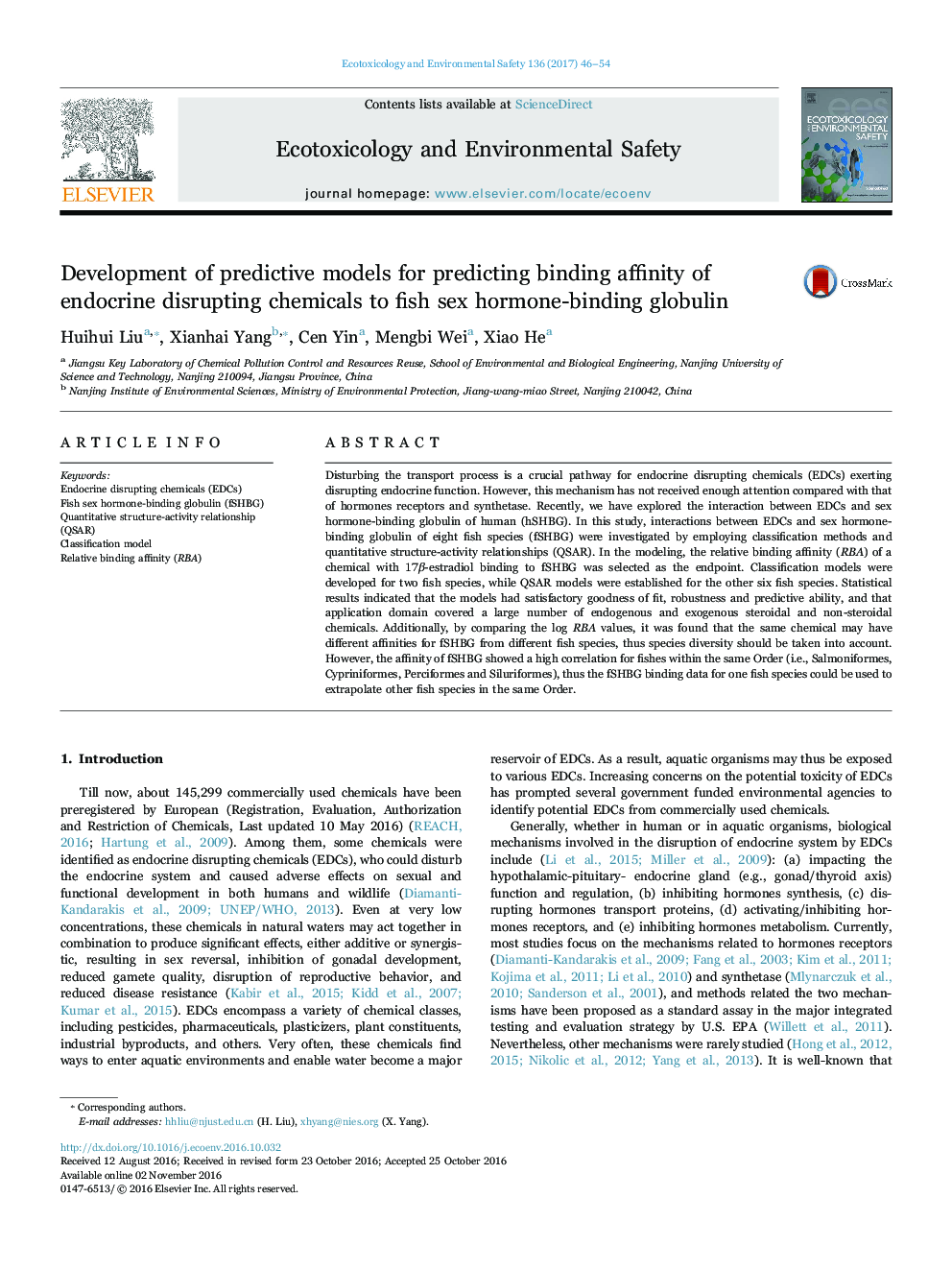| کد مقاله | کد نشریه | سال انتشار | مقاله انگلیسی | نسخه تمام متن |
|---|---|---|---|---|
| 5748131 | 1618928 | 2017 | 9 صفحه PDF | دانلود رایگان |
- An important pathway for EDCs exerting disrupting endocrine function was emphasized.
- Classification and QSAR models were developed for predicting the binding affinity.
- A good relationship of binding data occurred within fish species in the same Order.
Disturbing the transport process is a crucial pathway for endocrine disrupting chemicals (EDCs) exerting disrupting endocrine function. However, this mechanism has not received enough attention compared with that of hormones receptors and synthetase. Recently, we have explored the interaction between EDCs and sex hormone-binding globulin of human (hSHBG). In this study, interactions between EDCs and sex hormone-binding globulin of eight fish species (fSHBG) were investigated by employing classification methods and quantitative structure-activity relationships (QSAR). In the modeling, the relative binding affinity (RBA) of a chemical with 17β-estradiol binding to fSHBG was selected as the endpoint. Classification models were developed for two fish species, while QSAR models were established for the other six fish species. Statistical results indicated that the models had satisfactory goodness of fit, robustness and predictive ability, and that application domain covered a large number of endogenous and exogenous steroidal and non-steroidal chemicals. Additionally, by comparing the log RBA values, it was found that the same chemical may have different affinities for fSHBG from different fish species, thus species diversity should be taken into account. However, the affinity of fSHBG showed a high correlation for fishes within the same Order (i.e., Salmoniformes, Cypriniformes, Perciformes and Siluriformes), thus the fSHBG binding data for one fish species could be used to extrapolate other fish species in the same Order.
Journal: Ecotoxicology and Environmental Safety - Volume 136, February 2017, Pages 46-54
